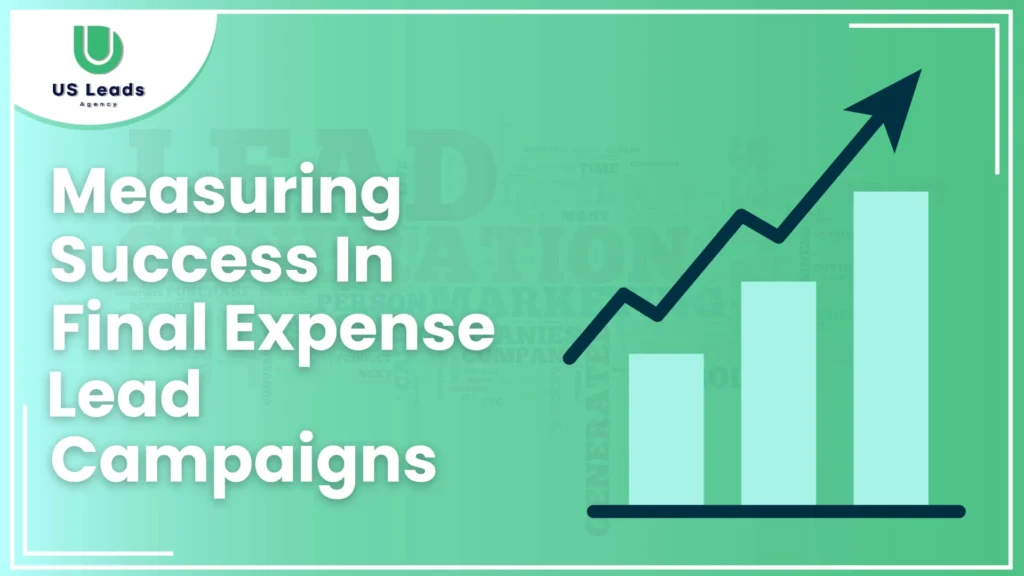
Final expense lead campaigns are crucial for insurance agents aiming to connect with individuals seeking end-of-life coverage. Measuring the success of these campaigns ensures your marketing efforts are effective and yield a solid return on investment (ROI).
This article outlines the essential steps about how to measure success of final expense lead campaigns and strategies to assess, improve, and sustain success in final expense lead campaigns.
Key Takeaways:
- Track metrics like CPL, conversion rate, and ROI to evaluate success.
- Prioritize lead quality over quantity for sustainable growth.
- Consistent optimization and data-driven strategies improve long-term campaign performance.
Table of Contents
What Are Final Expense Lead Campaigns?
Final expense lead campaigns are marketing efforts designed to generate leads for final expense insurance. These policies, also known as burial or funeral insurance, cover costs like funeral services, burial, and other end-of-life expenses.
Key Features of Final Expense Lead Campaigns:
- Target Audience:
- Seniors (ages 50–85).
- Individuals seeking simple and affordable end-of-life coverage.
- Marketing Channels:
- Digital ads (Facebook, Google).
- Direct mail.
- Telemarketing.
- SEO-driven blogs and landing pages.
- Lead Types:
- Exclusive Leads: Unique to one agent for personalized communication.
- Shared Leads: Cost-efficient but competitive among multiple agents.
- Live Transfers: Real-time calls connecting qualified prospects to agents.
Why Are These Campaigns Popular?
- Simplified policies require no medical exams.
- Affordable premiums appeal to seniors on a fixed income.
- Emotional messaging emphasizes relieving financial stress for loved ones.
How To Measure Success Of Final Expense Lead Campaigns: Key Metrics
1. Cost Per Lead (CPL):
CPL measures how much you spend to acquire a lead. A low CPL indicates cost-efficiency but should align with lead quality.
Formula: CPL = Total Campaign Cost ÷ Total Leads Generated
2. Lead Conversion Rate:
Tracks the percentage of leads that become paying customers. A higher conversion rate reflects effective targeting and follow-ups.
Formula: Conversion Rate (%) = (Converted Leads ÷ Total Leads) × 100
3. Customer Acquisition Cost (CAC):
CAC evaluates the total expense of acquiring a customer, including marketing and operational costs.
Formula: CAC = Total Campaign Cost ÷ Number of New Customers
4. Return on Investment (ROI):
ROI shows the profitability of your campaign by comparing revenue to expenses.
Formula: ROI (%) = [(Revenue – Campaign Cost) ÷ Campaign Cost] × 100
5. Lead Quality Score:
Assess the likelihood of conversion based on factors like demographics, engagement, and responsiveness.
6. Response Rate:
Tracks how many leads engage with your outreach (e.g., emails, calls). High response rates signal effective messaging and targeting.
7. Retention Rate:
Measures the percentage of customers who renew or stay loyal over time, critical for long-term profitability.
Tips For Optimizing Final Expense Leads Campaign Performance:
- Target the Right Audience: Use analytics to focus on individuals aged 50+ with an interest in end-of-life planning.
- Refine Ad Creatives: Test variations of visuals, headlines, and CTAs to maximize engagement.
- Leverage Automation: Use CRM tools to streamline follow-ups and nurture leads efficiently.
- Monitor Trends: Regularly analyze campaign metrics and adjust strategies based on data insights.
Conclusion – How To Measure Success Of Final Expense Lead Campaigns:
Measuring the success of final expense lead campaigns involves tracking key metrics like CPL, conversion rate, and ROI. By emphasizing lead quality, refining targeting strategies, and leveraging automation, you can achieve sustainable growth and improve campaign performance.
Remember, a well-executed campaign not only generates leads but also fosters trust and builds lasting client relationships. With consistent evaluation and optimization, your final expense campaigns can yield exceptional results in a competitive market.
FAQs:
How can I improve my conversion rate?
Target the right audience, personalize outreach, and offer clear, compelling value propositions.
Why is lead quality more important than quantity?
High-quality leads are more likely to convert, saving time and resources compared to chasing a large volume of unqualified leads.
What tools can help track campaign success?
Google Analytics, CRM software, and marketing platforms are effective for tracking key metrics.
